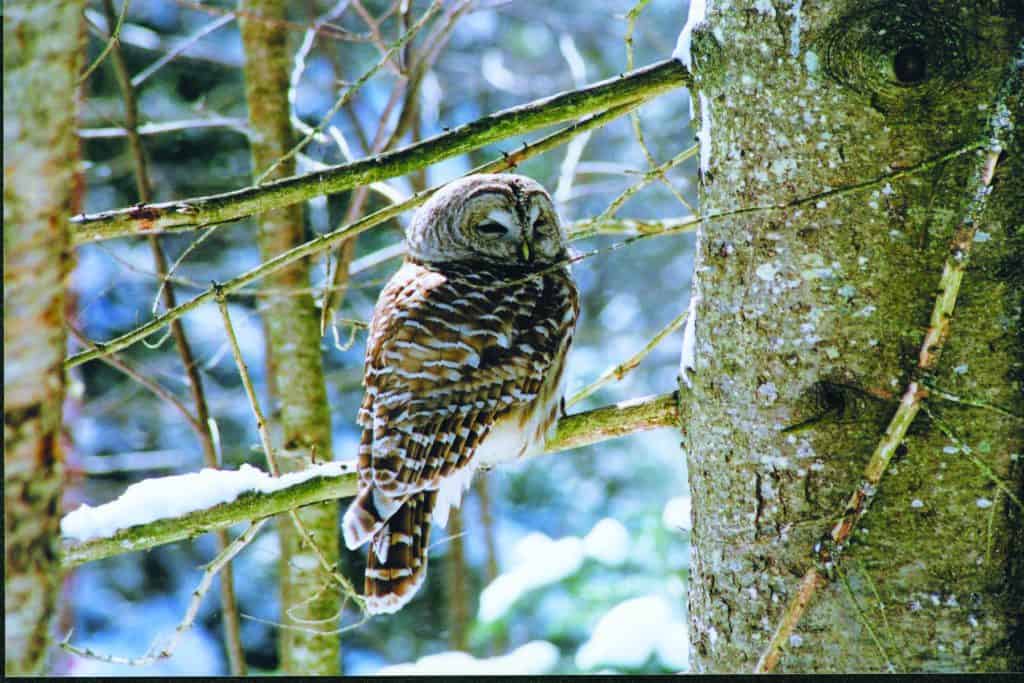
Even the sound of that word stirs the imagination. Perhaps it describes deep outer space full of new uncharted stars, planets, and asteroids. Nope. Look closer to earth because subnivean space, as owls, red foxes, coyotes, and even house cats know, is that area between the outer snow crust (top) and the earth surface below.
It gets thicker over the course of most Central Vermont winters and provides a relatively stable environment throughout the days of mid-winter when the snow lies deep in our yards, meadows, and forests.
While we snuggle in our insulated homes by the wood stove, once the snow depth outside exceeds about 6 inches, this subnivean zone becomes the living area for field mice, voles and shrews protected from the severe cold temperatures and potential predators by the insulative capacity of snow.
For some species this zone can also be temporary night shelter to escape severe cold temperatures (roughed grouse actually burrowing into the snow for example) or for red squirrels to create snow tunnels toward your bird feeder, thus minimizing their exposure to attack from above.
Every spring as the subnivean space nears zero depth, with the snow gone, the trunks of young trees reveal the evidence of mouse or vole feeding beneath the snow by appearing barkless. The thin bark of young trees is easily chewed off by mice and voles to get at the more succulent and nutritious cambial layer growing inside. Once the bark has been removed and cambium layer consumed the tree has little chance of survival. The deeper the snow pack, the length of winter, the lack of other available food, and the size of the subnivean population over any given winter determines the extent of the damage exposed each spring.
This is a naturally occurring part of life in the wild but can be expensive to a homeowner when the subnivean layer surrounds a newly planted maple tree on the front lawn or a few apple trees planted for pie making in a few years. If you expect the snow to be deep this winter every hardware store around probably carries “tree wrap,” which is a plastic material that when wrapped around the trunk and left on until the snow is gone (you have to guess how high the snow will be) will provide a physical barrier to mole and mouse appetites. Had you been pro-active last fall potential subnivean damage could have been minimized by cutting all grass and brush low to the ground around the tree trunk, thus helping prevent snow build up. But don’t blame it on the creatures; winter is a tough time on all of us and we all adapt in some fashion. Fortunately subniveans cannot move silently beneath the snow which is why we occasionally see owl wing tracks on the snow or the beauty of a red fox (or house cat) looking like a pointer as they hone in on a noisy subnivean for lunch.
If you want to explore the ingenuity of winter animal survival as you snuggle next to the wood stove during a sunny winter afternoon this January or February pick up a copy of Bernd Heinrich’s “Winter World.” Within its 300 pages the former UVM biology professor covers in detail the world of subnivean life. Or just look outside.




